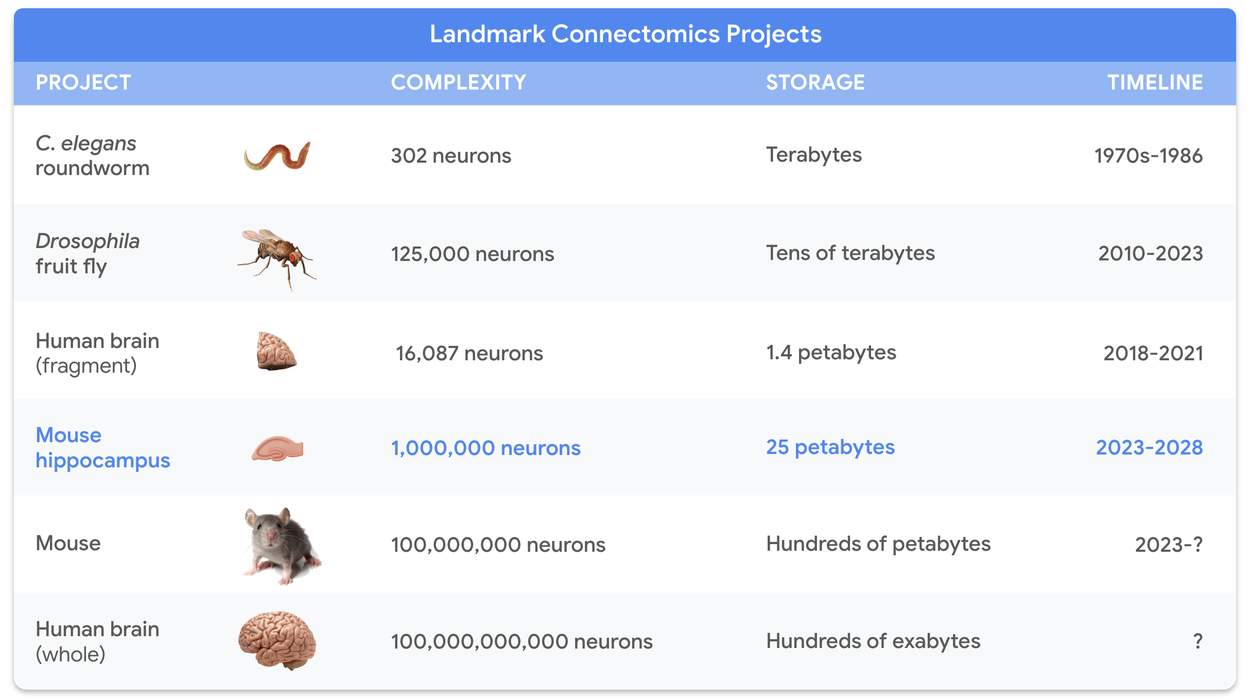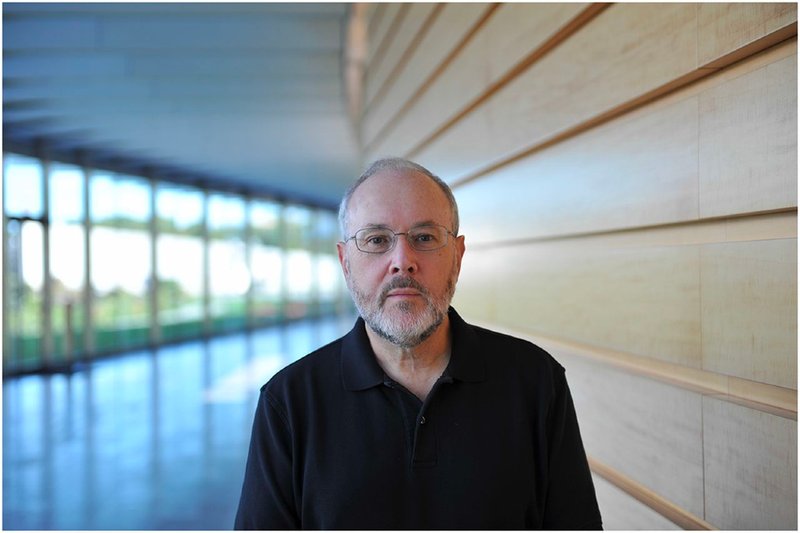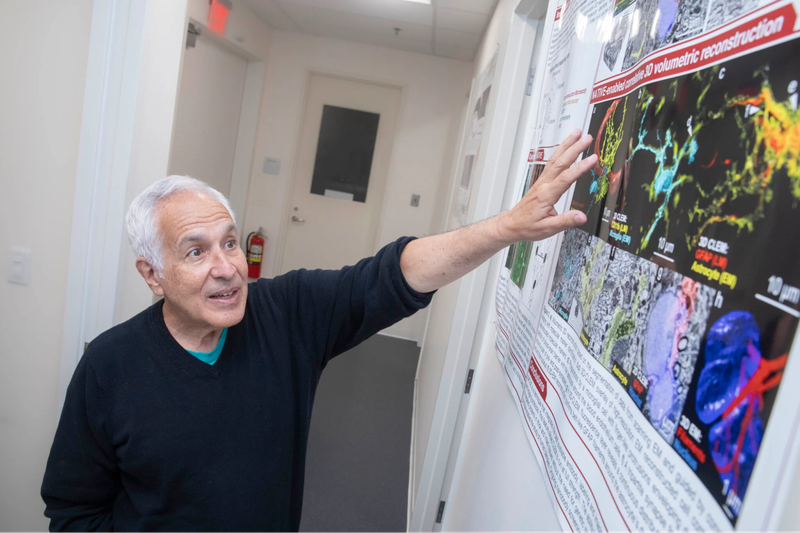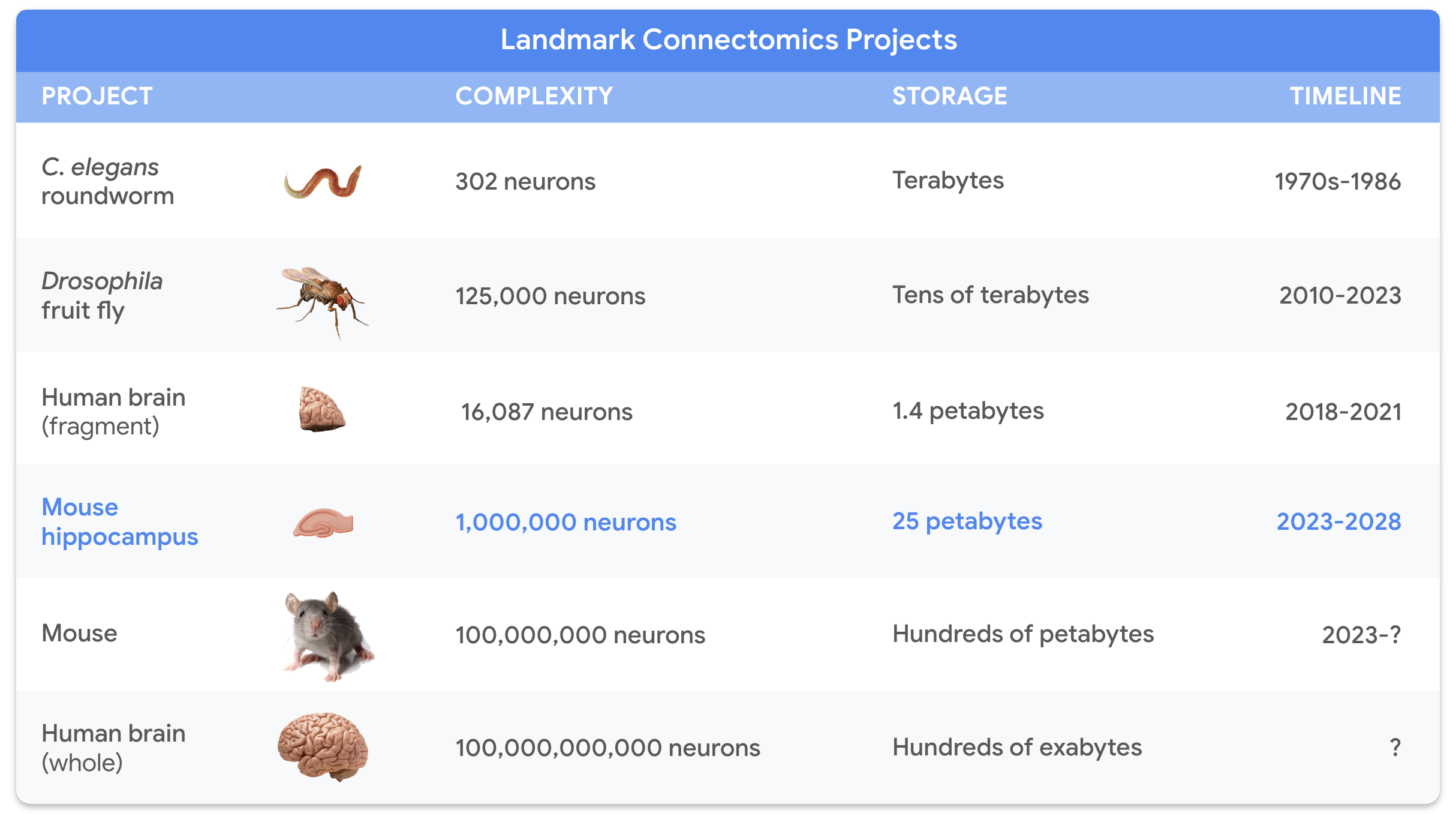Neural mapping
Google Research is driving progress toward precisely mapping the connections between every cell in the brain.
What is connectomics?
The human brain is perhaps the most computationally complex machine in existence, consisting of networks of billions of cells. Researchers currently don’t understand the full picture of how glitches in its network machinery contribute to mental illnesses and other diseases, such as dementia. However, the emerging connectomics field, which aims to precisely map the connections between every cell in the brain, could help solve that problem.
The Connectomics team at Google Research has played a key role in advancing the connectonomics field by developing new technologies that have accelerated scientific progress. These technologies enabled us to map parts of the fruit fly, mouse and human brain, and could one day help us better understand how the human brain works and how to treat brain diseases. The timeline and chart below demonstrate how connectomics has evolved since the 1970s.







